SEARCH FOR MH370
One of the most notable aviation events of 2018 was, essentially, a non-event. More than four years after the Boeing 777 left its Kuala Lumpur-Beijing flightpath and disappeared with the presumed loss of all 239 souls on board, the search for Malaysia Airlines flight MH370 was finally called off, having found nothing.
Despite intensive application of undersea search technology more exotic than the missing aircraft and some inkling as to where to focus an Indian Ocean search – based on last contact and a series of satellite communications "handshakes" – all that has turned up are a few scraps of 777 on African beaches.
With very little evidence to work on – and, of course, no wreckage or black box – the Malaysian government's final report could reach no conclusions. Much circumstantial evidence points to a deliberate act: a mysterious turn-back; the abrupt loss, with no indication of faults, of five systems for communicating location; a disturbingly precise course to Penang, the captain's birthplace, circumventing Indonesian airspace and the extraordinary discovery on the captain's home simulator of plotted waypoints charting a course similar to that of the missing aircraft.
Connecting such evidence to events, though, is the domain of speculation. Neither pilot was known to be under pressure in their private life nor showed outward signs of stress or anxiety. And there is no evidence that anyone other than the two pilots flew the aircraft. So, in the end – and the Malaysian government insists it will never abandon the "aspiration" of finding MH370 – it is reasonable to presume the aircraft was destroyed deliberately for reasons that will remain as elusive as the wreckage.
There is, though, some compensation in the form of an impending boost for air travel safety. Aircraft flying over open ocean or very remote regions often go out of sight of radar and ground-based automatic dependent surveillance – broadcast (ADS-B) identification and position signal receivers and are hence untrackable.
But the MH370 tragedy focused minds to exploit an unintended characteristic of ADS-B, which is that the signals, though broadcast "down", are in fact easily picked up by satellites in orbit. With all commercial aircraft due imminently to carry ADS-B equipment and several constellations of satellite-borne ADS-B transponders now entering service, the prospect of another MH370 – with communications down owing to technical failure, crew incapacity or intentional silence – should soon fall to more or less zero.
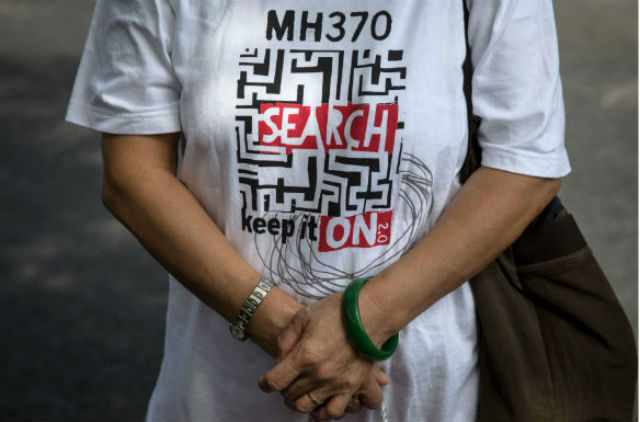
Roman Pilpey/EPA-EFE/REX/Shutterstock
Q400 THEFT, SEATTLE
Less costly – "only" one death – but perhaps as unsettling as the loss of MH370 was the August theft of a Horizon Air Bombardier Q400 from Seattle-Tacoma airport. Accessing the unoccupied aircraft from its parking slot in an airport cargo area, 29-year-old Horizon ground service agent Richard Russell used a pushback tractor to turn it around before climbing aboard, taxiing and taking off. All, of course, with no authorisation. Manoeuvres including a rolling loop ensued – described by an official of Horizon's parent, Alaska Air, as "incredible" and captured on video by onlookers. Air defence F-15s were scrambled supersonic from Portland, Oregon.
Air traffic controllers had at least 20min of radio contact with the pilot, but failed to convince him to make a controlled landing or ditch. The episode ended with a crash onto an island in Puget Sound, killing Russell and destroying the aircraft.
Investigation continues, but one factor would appear to connect this episode to the loss of MH370, the 2015 French Alps crash of a Germanwings Airbus A320 and literally dozens of uncelebrated single-flyer fatalities marked as "suicide" on the UN National Transportation Safety Board books: mental health.
Following the Seattle incident, FlightGlobal noted that the Germanwings tragedy had "triggered a crisis of confidence over the mental health of professionals in the cockpit [and] the air transport industry responded with a cocktail of evocative statements and half-baked countermeasures. Because it could not offer much else.
"Peer intervention is effective, but relies on detecting mental illness in a male-dominated, fault-intolerant business, with its image of coolness under pressure."
But the Horizon Air death was not of a pilot, and thus highlights how vulnerable is a complex, safety-critical industry like aviation to the emotional condition of many operatives. For World Mental Health Day on 10 October the UN’s World Health Organization pointedly remarked: "Half of all mental illness begins by the age of 14, but most cases go undetected and untreated… Suicide is the second leading cause of death among 15-29-year-olds."
And: "While the link between suicide and mental disorders … is well established in high-income countries, many suicides happen impulsively in moments of crisis with a breakdown in the ability to deal with life stresses, such as financial problems, relationship break-up or chronic pain and illness." Pilots in cockpits, it is hoped, do not succumb to impulses – but hope is not a very good safety strategy.
Every year, the WHO says, 800,000 people commit suicide and many more attempt to kill themselves. That number of dead – more than 1 person in 10,000 globally – is roughly the same as the number of pilots that airlines will need to recruit and train (mostly in low- and middle-income countries) over the next two decades to cope with expected industry growth. With every pilot, of course, comes the need for many more workers: air traffic controllers, maintenance staff, cabin crew and ground handlers.
In short, aviation has to work out how it is going to operate in a world that – belatedly – is waking up to the reality of a persistent mental health crisis. As it has led in safety culture, the industry is going to have to become a leader in prevention, detection and treatment of mental health problems. It is also going to have to recognise that, at any given time, a sizeable cohort of its staff and recruits are recovering from emotional trauma.
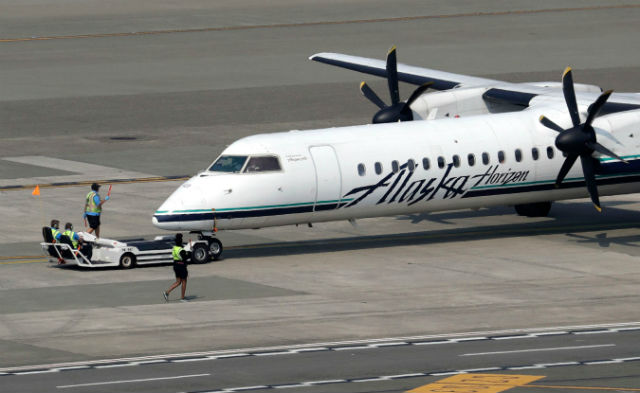
Elaine Thompson/AP/REX/Shutterstock
IRAN SANCTIONS
Civil aerospace does not normally cross paths with nuclear deterrence, but Boeing, Airbus and ATR became caught in the fallout from US President Donald Trump's move in May to pull the country out of an Obama-era deal with Iran.
That 2015 agreement – designed to tempt Iran away from developing nuclear weapons by opening previously locked doors to a normal global trading regime – gave Iranian carriers the freedom to buy desperately needed modern aircraft. But that market access, at least with the USA, came to an end when Trump fulfilled a campaign promise to withdraw from a Joint Comprehensive Plan of Action (JCPOA) he described as "disastrous" and "decaying and rotten".
An early beneficiary of the JCPOA was Boeing, which sealed an Iran Air order to buy or lease 117 aircraft worth $17.6 billion. Boeing boss Denis Muilenburg said, essentially, that the loss of the Iran deal was no biggy. Indeed, investors may not have lost much sleep over their Boeing exposure, given the thousands of aircraft in its order backlog.
Some collateral good did come out of the affair, however, as Muilenburg made it an opportunity to set a new standard for US business-speak. What he actually said, in the run-up to Trump's May order, was not "that Iran thing is no biggy" but, rather, that the company was following US policy towards Iran trade and had "ensured that from a skyline management standpoint and from a production systems standpoint, we are not dependent on those aircraft".
But if Boeing’s situation vis-a-vis Iran was more simple than its language, for arch-rival Airbus things were not so straightforward. When Trump dropped his bombshell, Iran Air had 98 Airbus jets on order, including 28 A330-900s – some 13% of the entire A330neo backlog. Other Iranian carriers were in the Airbus backlog, too, including a prospective deal for 45 A320neos to Iran Airtour. Turboprop maker ATR also had orders from Iran Air for 20 aircraft, of which eight had been delivered.
For Airbus and ATR, the saga has become a matter of transatlantic politics. Trump's move was very much unilateral, opposed by the other signatories to the 2015 deal – China, France, Germany, Russia and the UK. The European Commission even established a blocking statute to protect European companies from foreign court judgements that upheld US sanctions on Iran, which came into force in August.
But it would appear that the USA holds the Trump card, because all the aircraft in question include US-made parts. As The Donald put it back in August: "Anyone doing business with Iran will not be doing business with the USA."
You're fired.
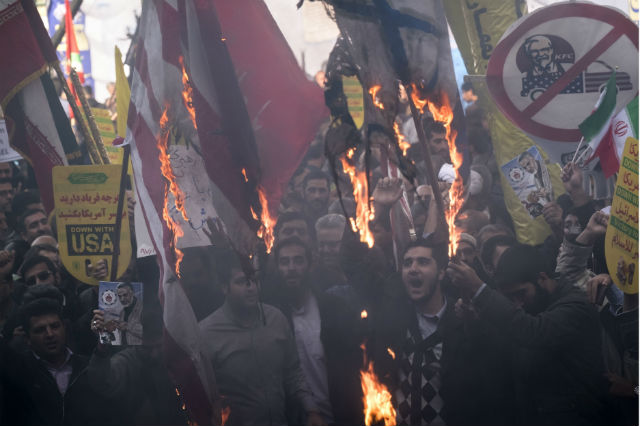
Morteza Nikoubazl/SIPA/REX/Shutterstock
ULTRA-LONG-HAUL
For those who love to fly, what could be better than 18h in the air? Actually, make that 18hr 45min for a 9,000nm (16,700km) nonstop Singapore-Newark run on board Singapore Airlines' new Airbus A350-900ULR; that's ULR as in "ultra-long-range". Flight SQ22 kicked off the ULR age on 11 October, configured with 67 business and 94 premium economy class seats. Daily service started a week later.
At 8,285nm, SIA’s Singapore-Newark service is the longest of long-haul flights, overtaking Qatar Airways' 7,848nm Doha-Auckland Boeing 777-200LR route. The carrier is also deploying the A350-900ULR on services from Singapore to Los Angeles and San Francisco.
SIA's first A350-900ULR (9V-SGC) is one of seven it will operate. Compared to plain -900s, the ULR has a modified fuel system, a higher maximum take-off weight at 280t and aerodynamic tweaks to stretch its range. The fuel capacity is raised by 17% to 165,000 litres (43,600USgal).
But SIA is not alone in the superlong-range business. Qantas is initiating Boeing 787-9 flights on a London-Perth-Melbourne-Los Angeles routine. And the Australian icon is talking to Airbus and Boeing about equipment capable of linking Sydney and New York – with a full passenger load. A350-900s, -1000s and 777-8 options are believed to be on the table.
New technology is a key factor in making these routes financially viable. SIA last operated nonstop Singapore-Newark in 2013 with A340-500s, but poor economics forced the carrier to pull out of the route.

Wallace Woon/EPA-EFE/REX/Shutterstock
ULTRA-BIG HAUL
Never let it be said that Airbus thinks small. Knitting together production facilities spread across Europe involves elaborate logistics: ships, trains, trucks and outsized cargo aircraft. Like the component parts they need to carry – wings and fuselage barrels, for example – those cargo aircraft are growing larger.
So, this year saw the first flight test of an A330-200F-based BelugaXL, which will supplement and ultimately replace the Beluga, based on the smaller A300 and not big enough to carry a pair of A350 wings. These whales replace mere Super Guppies, a turboprop based on the 1950s Boeing Stratocruiser/Stratotanker. Retired 20 years ago, the Super Guppies got Airbus off the ground, so to speak – three are in museums but the fourth remains in service with NASA.
Airbus expects to have the BelugaXL certificated and in service in 2019 and will build five of the type. Compared to the Beluga, the Rolls-Royce Trent 700-powered XL is 6m (20ft) longer, 1m wider and 50cm higher. And while it has much longer range – 2,300nm compared with 900nm – initial expectations are that it will be used only within the Airbus European production network.
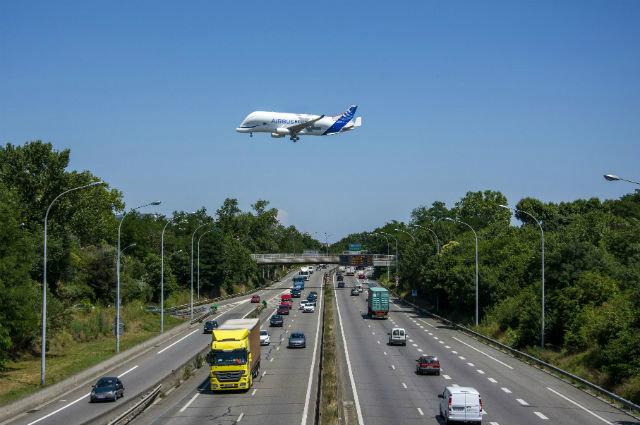
JV Reymondon/Airbus
US-CHINA TRADE WAR HEATS UP
Increasingly heated relations between the USA and China was one of the top stories of 2018, with US president Donald Trump raising the temperature in a heatwave summer by matching words on trade practices to action in the form of punitive tariffs. By autumn, the expected counter-measures had Trump promising not to lower the heat but to go full-steam and bring all $500 billion-plus of Chinese exports to the US into a bruising tariff net.
The merits or otherwise of underlying geopolitical concerns driving this outbreak of hostile positioning may be debatable. But in any case, this sparring between the world’s two biggest economies over trade in goods has understandably left business people, diplomats and ordinary workers – in the USA, China and pretty much everywhere else – worried; an extended trade war, at a time when the global economy feels fragile, could hardly roll on without heavy collateral damage.
But aviation, perhaps remarkably, has yet to feel much impact. At the 2018 half-year mark, one carrier – Cathay Pacific – pointed to "economic uncertainty arising from global trade concerns" and the strength of the US dollar as its two biggest challenges. IATA, meanwhile, reckons the US-China trade tension is a risk to airlines’ business but does not expect major disruption.
One useful prism to view the situation through is GDP. Airline fortunes tend over time to track economic growth, so if a trade war hits income broadly, travel – business and tourism – will take a hit. Air freight, perhaps surprisingly, does not – so far – appear to be in the firing line. The first wave of US tariffs hit bulk goods that tend to go by sea. A more comprehensive US tariff blow would hit sectors that rely somewhat on air freight, but US-bound goods such as semiconductors and auto parts originate mostly in Canada and Mexico.
IATA’s assessment of the trade war situation even finds a silver lining. If economic growth takes a hit, the price of oil would likely fall. For airlines, that's usually good news.
Or is it? Stock markets rolled into the tail end of 2018 on a downward slope, with analysts talking about a "correction" to end a bull market driven – since initial recovery from the 2008 financial crisis – by central banks' so-called quantitative easing. That is, by vast sums of super-cheap money available to all and sundry.
With central banks now pulling in the cash and raising interest rates, investors, companies and individuals are feeling a colder wind of reality. Financial pundits are talking about the next downturn in terms of when, not if.
This recalls one airline boss's late-2008 comment about that summer's spike in oil prices. He could live with oil at $150/barrel – but a collapse in passenger demand, that was a different story.

Yuri Kochetkov/EPA-EFE/REX/Shutterstock
CHINESE SPIES NABBED IN ENGINES PLOT
In 2018, the US government came out swinging against what officials described as a broad plot by Chinese intellectual property spies to rip off commercial aircraft engine technology from leading Western engine makers.
The Department of Justice (DOJ) filed two indictments in a federal court, alleging in both that the conspiracies were managed and organised by a provincial unit of China's counter-intelligence force.
The spies sought to infiltrate more than a dozen Western aerospace companies, including GE Aviation, by taking jobs with the companies, courting their executives and using advanced methods to infiltrate computer systems, the US government alleged.
The first indictment became public in October when US officials extradited a Chinese national who allegedly attempted to steal from GE Aviation technology related to engine fan blades, composite materials and containment structures.
Later in October the DOJ filed a second indictment against another 10 alleged spies for involvement in a similar-sounding plot. They, too, sought commercial aircraft engine technology (among other aerospace technology) and targeted companies including an unnamed major French commercial aircraft engine maker. GE Aviation and French company Safran Aircraft Engines jointly own CFM International, which makes Leap engines for the newest Boeing and Airbus narrowbodies.
The US government suggested the spies aimed to get their hands on information that could help a Chinese company develop competing engines. One indictment named, but did not implicate, Comac and AVIC.
AVIC is developing a turbofan for Comac's C919 – an aircraft also offered with CFM International Leap-1C turbofans.
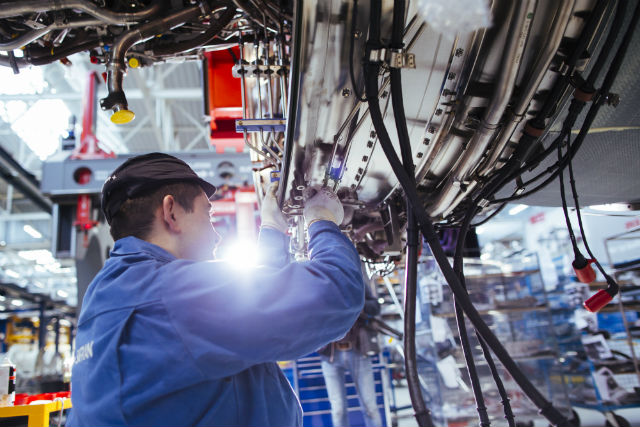
Safran
PROFIT AND LOSS
In a year of geopolitical drama, airlines – globe-trotting national champions that they are – felt some heat. Early shots in a simmering US-China trade war hit sector confidence, while the Trump administration's move to reapply the sanctions thumbscrews on Iran ended that country's airline growth story by halting delivery of much-needed new aircraft.
Business plans in Europe, meanwhile, are being written in pencil, owing to relentless Brexit uncertainty, with its catastrophic, less-bad-but-still-bad and best-but-still-costly possible outcomes – namely, no-deal and flights are grounded, bad-deal and major market enters long-term relative decline, or no-Brexit and start counting the cost of trying to put everything back together.
But it was the all-too-familiar dynamics of oil prices that really set the 2018 aviation scene. From mid-2016 to mid-2017, the benchmark Brent crude per-barrel dollar price held a mid-40s to mid-50s range before starting a steady rise to a mid-80s peak in October; prices then headed back towards January's mid-60s, but a year of high fuel costs had already figured in a string of second-half profit warnings.
Still, for the larger airline groups, 2018 has been a relatively profitable period. Smaller carriers had a rougher ride; failures included Primera Air, which aimed to connect several northern European and US cities but was grounded before it had really begun its bid to join the emerging long-haul low-cost transatlantic market.
Elsewhere, it was another tough year in India, where over-capacity, fierce competition, rising costs and a weak currency continue to weigh on airlines. Weak currencies also hit Latin America, dragging down travel demand in Brazil and Argentina.
In North America, United Airlines' aggressive expansion began to pay off in what remains a profitable market for most carriers. Indeed, United boasted rising third-quarter profits despite the fuel cost drag. Other relatively good news saw a long-running and ill-humoured USA versus Gulf states dispute over open skies and alleged government subsidies at least nominally resolved.
But, true to form, the year's dramatic turn revolved around Ryanair boss Michael O'Leary. Under pressure, he dropped a longstanding refusal to entertain unionisation only to discover that his pilots rather enjoy speaking with a, well, united voice. And, no surprise, they have grievances; strike action hit schedules, fares, bookings and passenger confidence – and financial results. Iron grip on company loosening, it seems.
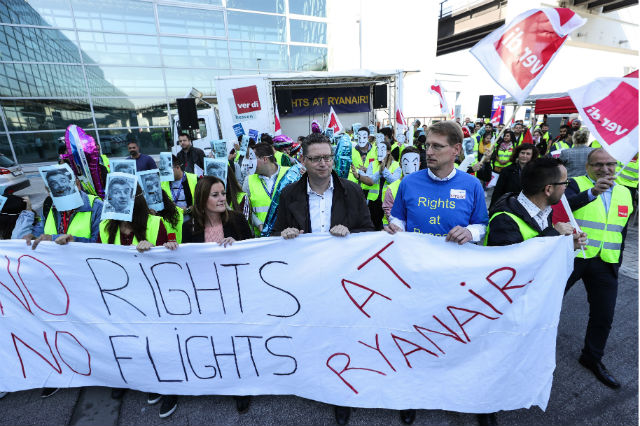
Armando Babani/EPA-EFE/REX/Shutterstock
CSERIES GOES AIRBUS
If evidence were needed that the commercial aircraft market favours financial heft over innovation, consider Bombardier's journey through 2018. The year started with the financially challenged Canadian aerospace champion targeting, half-way through a five-year turnaround plan, "to achieve free cash flow breakeven in 2018, plus or minus $150 million". Mid-way, it closed the deal that sold its technology-packed CSeries narrowbody to Airbus for no money down. And, as folks were starting to think about breaking out their festive season decorations, it announced it was to sell its Q400 turboprop programme.
CSeries was always risky. Bombardier is a small player that decided to move out of its regional aircraft comfort zone into a market dominated by two behemoths, Airbus and Boeing. And the aircraft occupies a unique segment, sized between large regional jets and the smaller variants of the enormously successful A320 and 737 narrowbodies.
Bombardier's alternative – to make much-needed and heavy investment in its CRJ regional jets range – was perhaps not so attractive. The simple reality was that by the time Bombardier launched the CSeries programme a decade ago, after several years of studies, its CRJ business was under heavy pressure. Embraer had established itself as a peer and the market pressures that had already wiped out small regional jets in favour of larger models were starting to give the smallest Airbus and Boeing narrowbodies traction over the largest regionals.
But Bombardier insisted the clean-sheet CSeries' advanced technologies – fly-by-wire controls, composites and Pratt & Whitney geared turbofans – would prove irresistible to airlines.
A service entry once scheduled for 2013 did not come until the second half of 2016 with Swiss, owing to development and testing delays – including, no fault of Bombardier's, with P&W powerplants. Throughout, recurring and serious financial struggles (eased by government cash) left the impression that the company had bit off more than it could chew.
Ultimately, CSeries' technologies and efficiencies have yet to translate into huge orders – in no small part because Airbus and Boeing have pitched their re-engined A320neo and 737 Max to potential CSeries buyers. Bombardier eventually sold CSeries to Air Canada and Delta Air Lines, but orders still stood at only 400 aircraft in mid-2018.
Then came more trouble. Boeing in 2017 alleged that Canadian CSeries subsidies were illegal, and that Bombardier had sold CS100s to Delta at below-market prices – charges that could have seen a 292% tariff slapped on CSeries sales, effectively denying Bombardier its critical US export market.
In the end, a US trade court ruled against Boeing. But not before Bombardier played its get-out-of-jail-free card – by agreeing to sell Airbus 50:01% of the programme for a fire-sale price of zero dollars. The two companies' plan was to skirt tariffs by opening a production line in Alabama, where Airbus was already established.
The deal, closed on 1 July, seemed sensible for Airbus. Toulouse could piggyback on Bombardier's work for little investment and fill in its portfolio with an aircraft it promptly renamed – no prizes for guessing “A220”.
Did Bombardier top brass have misgivings about going through with the Airbus deal despite their escape from punitive US tariffs? If they did, they never let on; rather, they insisted that this product of a decade's worth of Canadian toil, treasure and technology has a more-certain future with Airbus.
That same assessment returned in November, but this time, Bombardier's chief executive, Alain Bellemare, was talking not about Airbus and CSeries, but rather of the Q400 and Longview Aviation Capital, whose assets include Viking Air, the manufacturer of the DHC-6 Twin Otter utility aircraft and the CL-line of water bombers.
Yes, Bombardier is parting with another commercial aircraft programme, but at least it will get $300 million from Longview in the deal, which is expected to close in the second half of 2019. "We believe that there's a better owner than us to keep this programme going," Bellemare said.
In other words, it’s not you, it’s me.
Bombardier executives with long memories will certainly recall the period leading up to the CSeries "go" decision, when the CRJs were showing their age and losing ground to Embraer's assault. Today, the same can be said of the Q400, which has been struggling for several years against European rival ATR (half-owned, of course, by Airbus).
What comes next remains to be seen. But somewhere, somebody is surely running a rule over the CRJ programme; Bombardier says it will "explore strategic options" for its regional jets. These are, of course, a decade needier of investment than when they got jilted for the CSeries.
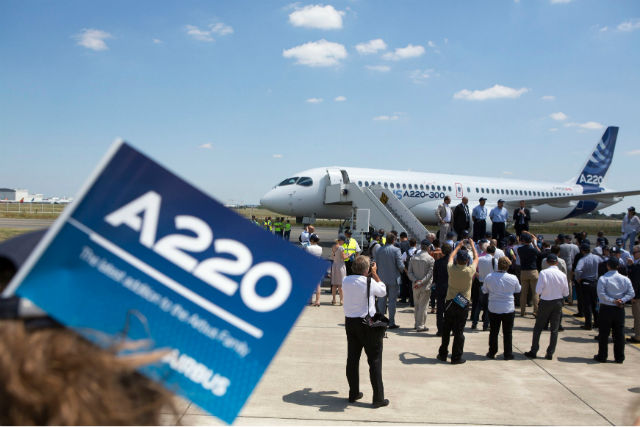
Frederic Scheiber/AP/REX/Shutterstock
BOEING DOES EMBRAER
The folding of CSeries into Airbus had the effect that acquisitions seem always to have: to spawn more acquisitions. So as could have been predicted (and was, by some), on 5 July, Boeing announced its intention to acquire 80% of Embraer’s commercial aircraft division, leaving the balance with Embraer. The deal, announced four days after Airbus acquired the aircraft now known as the A220, remains subject to government approvals. But the companies expect the sale will close by the end of 2019.
Boeing surely wasn’t planning so many moves ahead, but arguably set the merger ball rolling by attacking Bombardier in US trade court in 2017, with accusations that it exploited Canadian government subsidies to dump CSeries in the USA. Under fire, Bombardier found a saviour in Airbus – which scooped up CSeries for a song and announced plans to produce the aircraft in Alabama.
As the A220 backed by Airbus, the CSeries was a threat rather than a mere irritation. Boeing’s arch-rival would flex its global sales and procurement muscles to sell the advanced technology type – and rumours of new orders swirled. Against that backdrop, Boeing targeted Embraer in a deal that stands largely to restore Airbus and Boeing to equilibrium.
The agreement would make Embraer’s commercial unit, valued at about $4.75 billion, a “fully integrated subsidiary” of Boeing. In other words, Boeing would get Embraer’s immensely successful line of E-Jets, which span the roughly 70- to 146-seat range. Those aircraft mesh nicely with Boeing’s existing portfolio, which starts with the roughly 140-seat 737 Max 7.
Embraer has had great success with E-Jets, having delivered roughly 1,500 – though its backlog has slipped in recent years and now sits at about 260 aircraft, according to Flight Fleets Analyzer.
Should the deal close, Boeing would also secure Embraer’s well-respected cadre of aerospace engineers. Such a workforce could also contribute to other Boeing projects, which include the company’s ongoing study into developing a 757/767 replacement dubbed NMA, or New Mid-Market Airplane. Boeing has said it will decide in 2019 whether to launch that programme.
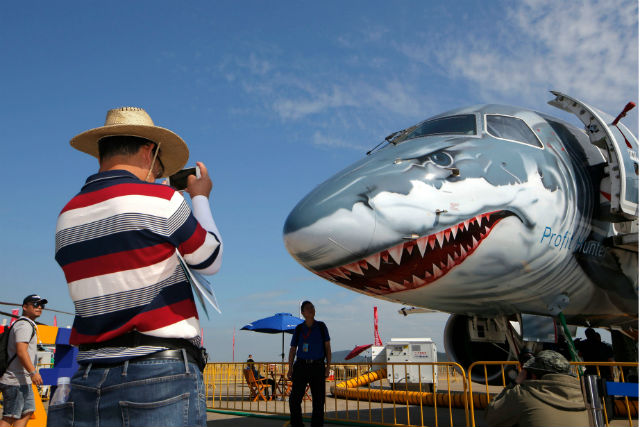
Kin Cheung/AP/REX/Shutterstock
BOEING GETS DEFENSIVE
Analysts, suppliers and even competitors typically describe Boeing Defense, Space & Security in one way: aggressive. And when it comes to Boeing's offer for the US Air Force T-X jet trainer competition, that description was definitely on target.
Its $9.2 billion bid came in far below the USAF's initial estimate of $16.3 billion for the T-X programme. The USAF clearly appreciated that offer and awarded Boeing an indefinite-delivery and indefinite-quantity award on 27 September, a contract that allows the service to purchase up to 475 aircraft and 120 simulators.
Boeing has not designed a clean-sheet fighter in years, so it relied on aft fuselage design work performed by its partner, Saab, for its T-X aircraft. The company had argued that its T-X bid was the lowest risk for the USAF because it was custom-designed to meet the service's specifications, rather than adapted from existing aircraft. Such was the case for Lockheed Martin's T-50A, which was based on the FA-50, a light attack and trainer aircraft developed with Korea Aerospace Industries; and Leonardo's T-100, which is based on the Alenia Aermacchi M-346 Master light attack and trainer aircraft.
Boeing believes it can make its low price profitable by selling up to 2,600 of the T-X aircraft globally, either as a trainer or a light attack variant. Ground-based trainers and advanced simulators would be sold as well. The company says the aircraft, simulators and associated services could be worth as much as $40 billion.
"To give you a sense of the multi-decade return on investment, the initial T-X contract represents less than 20% of the full production run opportunity and less than 10% of the total lifecycle services, support and upgrade opportunities," said Boeing boss Dennis Muilenburg, on an earnings call in October. "We anticipate the T-X to be a franchise programme for much of this century."
Before it can move onto its global ambitions, the company will have to deliver to the USAF. Boeing plans to run final assembly of the T-X trainer in St Louis, and expects Saab to move aft fuselage production to an as-yet-unannounced location in the USA. The USAF wants this replacement for the Northrop T-38 (pictured) to achieve initial operational capability by 2024, with full operational capability by 2034.
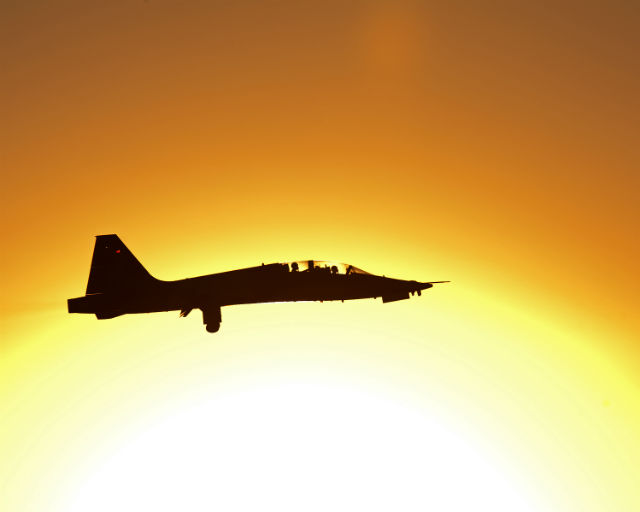
Danny Webb/USAF
F-35 IN ATTACK (AND SELF-DEFENCE)
The press statement was supposed to speak volumes: US Marine Corps Lockheed Martin F-35B Lightning II makes combat debut on 27 September. The Department of Defense (DoD) offered little else in the way of information – no details on who was the target, what weapon was used, or where the attack was launched, other than to say it was within Afghanistan and the aircraft took off from the USS Essex, a Wasp-class amphibious assault ship, in the Arabian Sea.
Presumably, the Pentagon thought the pithy disclosure on a Thursday would be enough to carry the news cycle through the end of the working week, a long-awaited morsel for defence reporters hungry to report that three years after the F-35B was declared to have initial operational capability it had finally conducted a combat operation.
Perhaps typically for a programme dogged by difficulty from the start, the very next day, the F-35B achieved another milestone: its first crash. The downing of the first F-35 of any variant since the aircraft began flying 12 years ago happened near MCAS Beaufort, in South Carolina on 28 September and was caused by a faulty engine fuel tube. Within a few weeks the worldwide fleet of Lockheed Martin F-35 Lightning II aircraft would be grounded.
The F-35 programme is used to taking two steps forward and one step back. It is almost a cliché to malign it for cost overruns and underperformance. But years after a USMC lieutenant general declared that the F-35B was "ready to go right now", the programme still cannot shake disappointment.
Without any serious competition from manufacturers in Western countries – Belgium recently selected the F-35A over fourth-generation fighter bids from Dassault Aviation and Eurofighter – the aircraft is bound to win orders from US allies for years to come. However, its advantage over adversaries appears to be shrinking: China's Chengdu J-20 stealth fighter made an impressive aerial display at the 2018 Air Show China in Zhuhai and Russia's anti-stealth Almaz-Antey S-400 Triumf missile system is in service with Algeria, Belaurs, China and Russia – and soon, India, Saudi Arabia and Turkey.
Given the DoD's position of being accustomed to having to justify the most expensive weapon programme in US – if not world – history, none of this is good news. The USA's federal budget is heading towards crunch time, as interest payments on the nation's debt are projected to surpass all other categories, including its world-leading defence spending. Pentagon types must be hoping that the F-35 will have more to show in 2019 than it did in 2018.
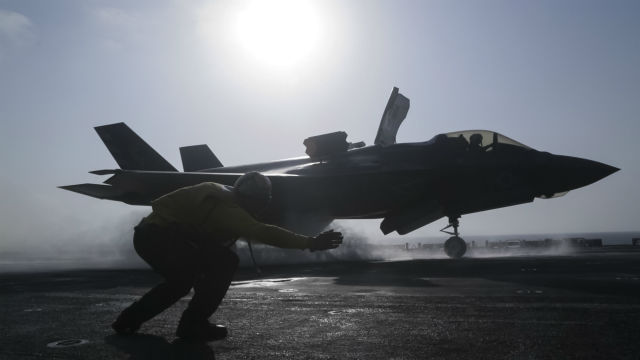
Cpl Francisco J Diaz Jr/USMC
NEWCOMERS
Mitsubishi MRJ
Japan’s return journey to commercial aircraft manufacturing has not been smooth. A series of delays to Mitsubishi Aircraft's MRJ regional jet programme were capped by the loss of much of 2017 to a redesign of avionics bays. Then, 2018 opened with a restructuring – its new programme management division integrates product, management and strategy teams – and the cancellation of around one-tenth of the orderbook: 20 aircraft that were to go to Eastern Air Lines.
A regular topic of MRJ discussion involves so-called scope clauses, or the 90-seat variant's breech of them. These contract terms are designed to protect pilot jobs by preventing major US airlines from outsourcing to regional affiliates some routes using 90-seaters. When US MRJ90 customers SkyWest and Trans States Holdings signed up for 150 aircraft, there was expectation those clauses would be relaxed. Alas, relaxation has proven elusive, leaving a question mark next to three-quarters of the barely 200 MRJ orders (with only six customers). Neither party seems much interested in a proposed, smaller MRJ70.
And just to make life that little bit more challenging, Bombardier filed suit in October, alleging that a group of its former employees stole trade secrets en route to jobs with a certification engineering company working on the MRJ. Meanwhile, Mitsubishi Aircraft's parent, the industrial group Mitsubishi Heavy Industries, has had to pump in nearly $2 billion in capital and debt relief to keep the show on the road.
Or, in the air. Because, troubles aside, the MRJ programme is flying and by all accounts making flight-test headway towards certification. Four aircraft are being kept busy at Moses Lake, in Washington state, a fifth and sixth aircraft are under construction at Nagoya, and the MRJ appeared at June's Farnborough air show. One consistent message has been coming out of Mitsubishi all year: steady as she goes and expect service entry in 2020.
Comac C919
Those who remember the 1980s will remember the sense – fear, even – that the Japanese could do anything and it was only a matter of time before they do everything and us old-world Westerners become irrelevant. This, of course, was and proved to be ridiculous, but that does not stop quite a lot of people believing that China can do anything and, well, it is only a matter of time before they do everything, and so on.
To wit, consider Comac's C919 narrowbody programme. Designed to take on the Airbus A320s and Boeing 737s that dominate their sector, the C919 makes sense – at least, given the size of the Chinese domestic market, which Flight Fleet Forecast reckons will soak up 85% of some 1,200 C919s likely to be delivered. But the programme, which relies heavily on Western suppliers, including CFM International and its Leap-1C powerplant, should perhaps be taken as it comes, rather than assumed as promised.
By December 2017, Comac had two aircraft flying. Then, all went quiet for six months. Reports that the pair were grounded for modifications were refuted by the airframer, which insisted modifications were part of the flight-test process.
Whatever is really going on inside Comac, Flight Ascend Constancy's global head of consultancy, Rob Morris, reckons Comac's stated 2020-2021 target for certification and service entry could be moving targets, given the track record of new manufacturers.
And, he notes, "what little detail we have" suggests C919 payload, range and economics will be broadly comparable to A320s and 737s – but the aircraft will, in the real world, be competing with the much more capable A320neo and 737 Max upgrades.
"Little detail" recalls another aspect of 1980s Japan – transparency was not a strong suit. Japan remains an obscure and challenging place to operate, but the Japanese themselves have long since taken on board the value of openness.

Imaginechina/REX/Shutterstock
Irkut MC-21
Testing continued on Irkut's MC-21 narrowbody. The second half of the year saw maximum load tests on a static airframe turn up "positive" results, and Russian authorities certificated the Aviadvigatel PD-14 engine that will be a domestic option to the Pratt & Whitney PW1400Gs fitted to the initial pair of flight-test aircraft.
European Aviation Safety Agency test pilots have also conducted preliminary examination flights of the baseline, 163- to 211-passenger -300 variant.
First flown in May 2017, Irkut’s narrowbody is planned to enter service in 2020.
CRAIC CR929
Sino-Russian joint venture CRAIC took a step closer to physical reality in November, showing a full-size mock-up of its planned twin-aisle passenger jet at Airshow China in Zhuhai. The project – joining Russia's United Aircraft and China’s Comac – aims to have a 280-passenger, 12,000km widebody in service in the late 2020s.
This year saw progress in the form of requests and bids for suppliers and proposals for certification procedures, along with at least reasonably firm notions of external shape and size. Expect, says, Flight Ascend Consultancy senior analyst Richard Evans, something bigger, in empty weight, than an Airbus A350 or Boeing 787 but with the same level of engine technology.
Early indications are that the plan is to fly with GE or Rolls-Royce power before Russian-made turbofans from United Engine or Aviadvigatel become an option.
The project offers Russian – and especially Chinese – companies prospects for partnerships with Western technology suppliers. Those Western partners, in turn, may seek to get on board for access to China's home market.
But such long-term prospects are also seen as vulnerable. A brewing trade war between the USA and China could leave the CR929 as a mainly Sino-Russian affair. The principal partners, in any case, will be hoping their union fares better than many historical attempts to marry Russian and Chinese ambitions.
MILESTONES
Future Vertical Lift gets horizontal
Bell's experimental V-280 Valor tiltrotor angled its propellers horizontally and flew for the first time in cruise mode on 11 May near the company's assembly facility in Amarillo, Texas. The company says the vertical take-off and landing aircraft achieved a speed of 190kt (352km/h) and that at a later, unspecified date it will aim to increase this to 280kt.
The aircraft, being used a demonstrator in support of the US Army's Future Vertical Lift programme that aims from 2030 to replace the Sikorsky UH-60 Black Hawk transport and Boeing AH-64 Apache attack helicopters. According to Bell, the V-280 "will fly twice as fast as the aircraft in the theatre today; twice as far; for the same cost".
Airbus A330-800 first flight
November’s first flight of the smaller A330neo variant had Airbus whooping with delight. The larger -900 model was by that time ready to begin service, with TAP Air Portugal, but the -800 had been seen as at-risk since March, when launch customer Hawaiian Airlines cancelled in favour of the arch-rival Boeing 787. The whole point of the A330neo project, kicked off in 2014, was to a keep pace with the 787 without having to match Boeing's spend – thought to be around $50 billion; Airbus says it spent $2 billion on its re-engined and updated rival.
Certification is expected in mid-2019, with newly signed launch customer Kuwait Airways expected to take first deliveries in the first half of 2020.
Virgin Orbit carries the can
Airlines may be phasing 747s out of passenger service, but one old Queen is starting a second life – ferrying very special passengers to space. For Virgin Orbit, the satellite-launching sister company to Richard Branson's Virgin Galactic suborbital tourism venture, an ex-Virgin Atlantic 747-400 is just the trick for lifting its LauncherOne rocket to altitude before dropping it – X-15-style – for ignition and flight to orbit. Aircraft modifications were not extensive, as the concept uses the "fifth engine" carry point that is standard on 747s. November saw the first captive-carry flight of the aircraft-rocket combo; further trials will culminate in a drop test and, all going well, flight to orbit in early 2019.

Virgin Orbit
Source: Flight International


























